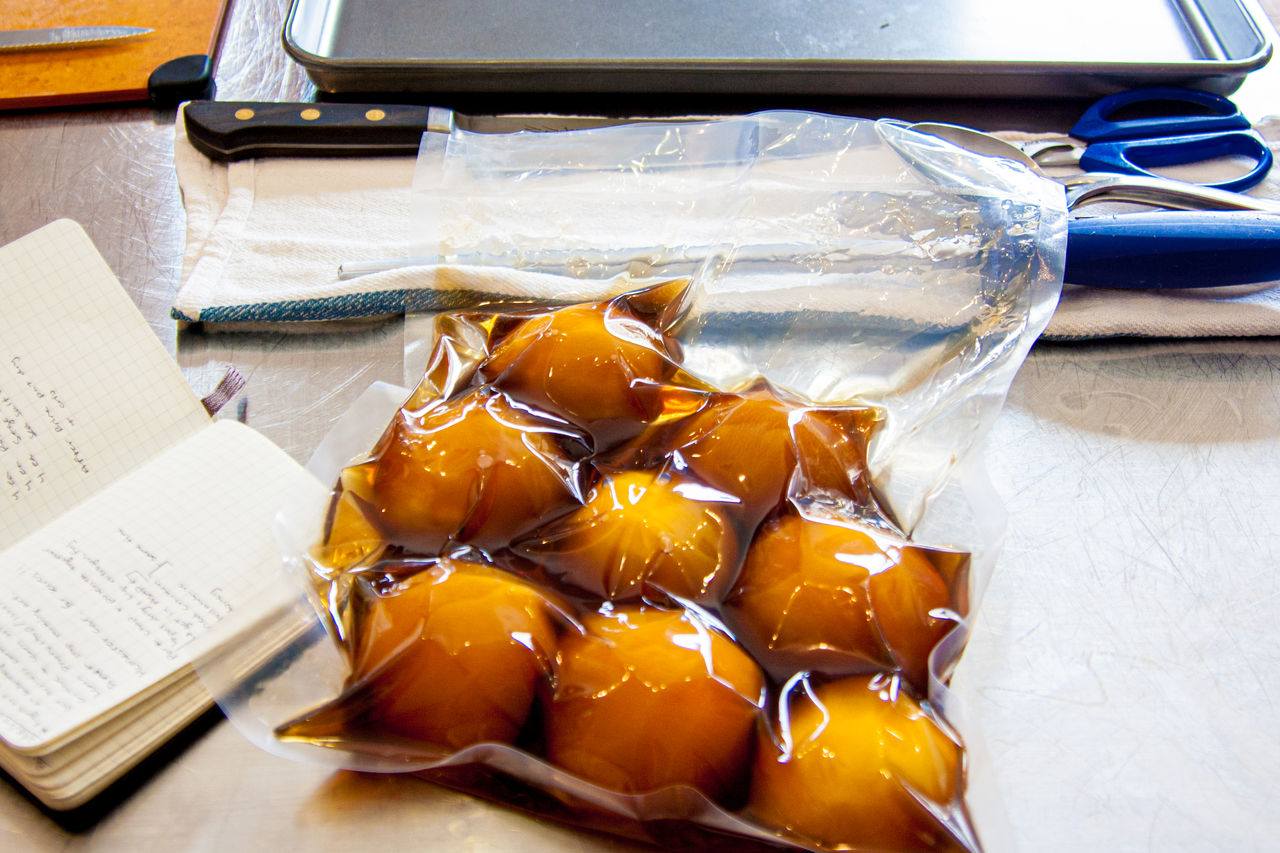
Sous Vide Chilling and Storage Guidelines
Without question, you’ve heard phrases like “seal in the freshness” or “extend shelf life”. Does vacuum sealing and / or pasteurizing with sous vide cooking really allow you to get “days or weeks ahead on prep”? The answer is yes, but you need to be extremely aware of your chilling procedures and storage temperatures.
Step chill
Food that has been cooked should be cooled before entering refrigeration. The reason for this is that placing a heat load inside of your refrigeration (even large walk-ins) will raise the temperature of the surrounding foods and make the equipment work harder than it needs to.
Another reason to cool the food quickly is that some bacteria are able to enter a dormant state by forming surrounding spores with thick cell walls that protect them. The bacteria of most concern in this case is C. Botulinum. These spores are damaged during cooking, but have the ability to regenerate. The spores of C. bot need to reach 250 F (121.111 C) to die as in process of canning. If the food is cooled slowly, this environment becomes favorable for the spores to regenerate, become active, grow, and multiply. Quick cooling and proper cold storage greatly slows down this regeneration.
Step chilling is process of gently cooling food that will optimize the food’s juiciness, flavor and texture. The other benefit is that partial cooling of the food prior to entering an ice bath is that because much of the heat load has already been removed, the ice bath can cool the product more-efficently.
Air cooling - After the food has been removed from the sous vide bath, lay the pouches flat on a cooling rack to allow air circulation around the product. Allow the pouches to rest for 10-15 minutes depending on size.
Cold water cooling - After air cooling, fill a sink with the coldest water that will come out of the tap. Rest the pouches in the cold water for 10-15 minutes depending on size. For good measure, gently agitate the pouches by hand half way through cooling. This will dissipate any hot spots that have developed.
Ice bath cooling - After cold water cooling, move the pouches to a container with a mixture 50/50 of ice and water. Chill the product in the ice bath for 2 hours or until the product reaches 41ºF as checked by a core temperature probe (measured at the thickest point of the product). Replenish the ice as needed to maintain a 50/50 ratio throughout cooling. For good measure, gently agitate the pouches by hand half way through cooling. This will dissipate any hot spots that have developed.
Chill from 135ºF to 41ºF
• Chill your Sous Vide, packaged products from 135ºF to 41ºF in maximum of 6 hours.
• Chill from 135ºF to 70ºF within 2 hours; and
• Chill from 70ºf to 41ºF (or below) within 4 more hours and store under 41ºF for up to 7 days from the date of packaging.
Cold Storage Requirements
A strong, consistent cold chain is a critical defense slow the growth of potentially harmful bacteria. Many jurisdictions have their own restrictions regarding storage temperatures and shelf life of sous-vide products and vacuum-packaging and storage of aquatic animals. Consult your local ordinance for specific information on this topic. Older regulations are still sometimes adopted by different states or municipalities (depending on which volume of the food code they follow)
• According to the 2017 Food Code: sous-vide food held at 41ºF or below may be held for no more than 7 days, at which time the food must be consumed or discarded -or- held frozen with no shelf life restriction while frozen until consumed or used.
• Keep cooked foods for 30 days (from the date of packaging) at or below 34ºF. Note that this is colder than most standard refrigerators. If you are unable to adjust the temperature of your refrigeration so that it meets this requirement, try packing the foods heavily in ice or an ice bath to reach this temperature.
• Once food has been removed from a storage environment of 34ºF, hold foods at 41ºF or less for up to 72 hours.
• Keep foods for up to 72 hours at or below 38ºF if they have not been previously chilled to and held at 34ºF.
• There is no shelf life restriction while frozen.

This post has been a collaboration between Breville | PolyScience and the team at CREA. For more information regarding sous vide cooking and vacuum sealing technique, please visit their selection of courses HERE. CREA is the research academy, founded by Dr. Bruno Goussault whom is widely accredited as the founder of sous vide cooking. Dr. Goussault was honored by the prestigious Einstein Legacy Project as one of the world’s 100 greatest innovators of the century for his pioneering work in this field. Sous vide cooking is a specialized process that requires an approved HACCP Plan or variance for the USA. CREA is your go-to resource to help build those plans.
